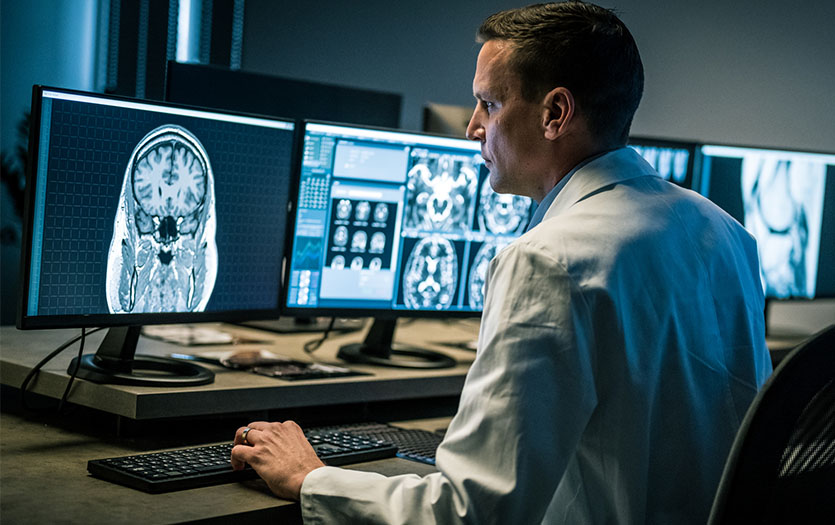A computed tomography (CT) scan uses X-rays to make detailed pictures of structures inside of the body.
During the test, you lie on a table that is attached to the CT scanner, which is a large doughnut-shaped machine. The CT scanner sends X-ray pulses through the body. Each pulse lasts less than a second and takes a picture of a thin slice of the organ or area being studied. One part of the scanning machine can tilt to take pictures from different positions. The pictures are saved on a computer.
A CT scan can be used to study any body organ, such as the liver, pancreas, intestines, kidneys, adrenal glands, lungs, and heart. It also can study blood vessels, bones, and the spinal cord.
An iodine dye (contrast material) is often used to make structures and organs easier to see on the CT pictures. The dye may be used to check blood flow, find tumors, and look for other problems. Dye can be put in a vein (IV) in your arm. Or, for some tests, you may drink the dye. CT pictures may be taken before and after the dye is used.
A special CT scanner called a spiral (helical) CT can provide a scan of the lungs in half the time of a standard CT scan. Spiral CT gets its name from the circular movement of the scanner around your body.




